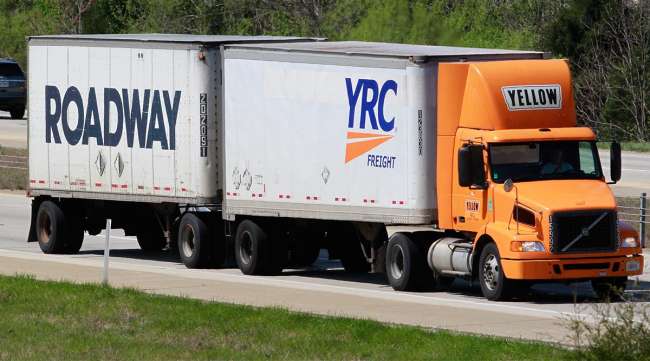Senior Reporter
February Weather Takes Toll on Yellow’s Q1 Earnings

[Stay on top of transportation news: Get TTNews in your inbox.]
Yellow Corp. reported a revenue gain for the first quarter of 2021, but said weather-related issues during the period took a toll on its bottom line.
The Overland Park, Kan.-based less-than-truckload carrier on May 5 said Q1 revenue rose 4.2% to $1.19 billion compared with $1.15 billion a year ago. However, for the three-month period it posted a quarterly loss of $27.6 million, or negative $1.26 a share, compared with a profit of $28 million, 13 cents, a year ago.
In a statement, Yellow CEO Darren Hawkins said the “generational storm in the southern United States” significantly impacted the company’s Q1 results.

Hawkins
“In February, roughly two-thirds of the 322 terminals in our network were either closed or had limited operations for some period,” he said. “Our linehaul operations were also impacted by suspended service at various times. The recovery period to get the network fully back in cycle had a long tail that lasted into March and we estimate the unfavorable impact to operating income in the first quarter was approximately $16 million.”
Earlier this year Yellow changed its corporate name from YRC to Yellow. The company operates its longhaul Yellow Freight division as well as three regional carriers — Holland, New Penn and Reddaway — and a logistics operation. The company is no longer providing operating statistics for those divisions.
Yellow’s overall Q1 operating ratio fell to 102.3, compared with 97.6 in 2020. Operating ratio measures a company’s operating expenses as a percentage of revenue and determines efficiency. The lower the ratio the more ability the company has to make a profit.
Hawkins said Yellow took a $1 million loss on the disposal of some property in the quarter, and cited $16 million in weather-related losses as the main reason the company did not turn a profit. “I’m not pleased by these Q1 results,” Hawkins said on a May 5 conference call with reporters and analysts after the financial report was released. “Even when you look at excluding the property sales ... and put in the $16 million for weather, it’s essentially flat and in this yield environment I’m not pleased with that.”
In fact, operating metrics such as tonnage and shipments per workday were up in the low single digits when measured against 2020. “We continue to see a strong yield environment,” Hawkins said.
Yellow spent $200 million in Q1 for purchased transportation services, an increase from $136.2 million in 2019. Hawkins said the driver shortage and tight capacity mean the company must pay a premium for these services, and he expects “near-term headwinds” in the second quarter until the company hires and trains more of its own drivers. Yellow is expanding its number of nationwide driving academies to 17.
Yellow last year received $700 million in two federal loans under the $2.2 trillion Coronavirus Aid, Relief and Economic Security Act. The company is using that money to upgrade its fleet.

The year is 2039. Zero-emission, electric heavy-duty trucks roll past you on the highway. Charging ports are now commonplace at terminals and truck stops. Diesel-powered vehicles are becoming a thing of the past. You sit and wonder: How did we get here? Here, in 2021, Daimler Trucks North America's head of eMobility speaks to RoadSigns. Hear a snippet above, and get the full program by going to RoadSigns.TTNews.com.
“We also took delivery of more than 1,100 tractors, 1,600 trailers, and 140 containers during the first quarter as part of our $450 million to $550 million capital expenditures plan in 2021,” Hawkins said. “As we hire drivers and bring on additional revenue equipment, we expect to use less local cartage and over-the-road purchased transportation.” Yellow in Q1 spent $202.4 million on capital expenditures.
Yellow also will benefit in the coming years from the $1.9 trillion COVID relief bill President Joe Biden signed in March. The legislation contains $86 billion in funding for the federal Pension Benefit Guaranty Corporation to provide grants to qualifying multi-employer plans to cover benefits through 2051.
“As far as our retirees and current employees, this is a very good development,” Hawkins said. “It allows them access to the pensions they have all worked very hard for. Our pension rates are part of the collective bargaining agreement, which, in our case, is locked in for the length of the contract which goes to 2024.”
Yellow Corp. ranks No. 6 on the Transport Topics Top 100 list of the largest for-hire carriers in North America.
Want more news? Listen to today's daily briefing below or go here for more info:




